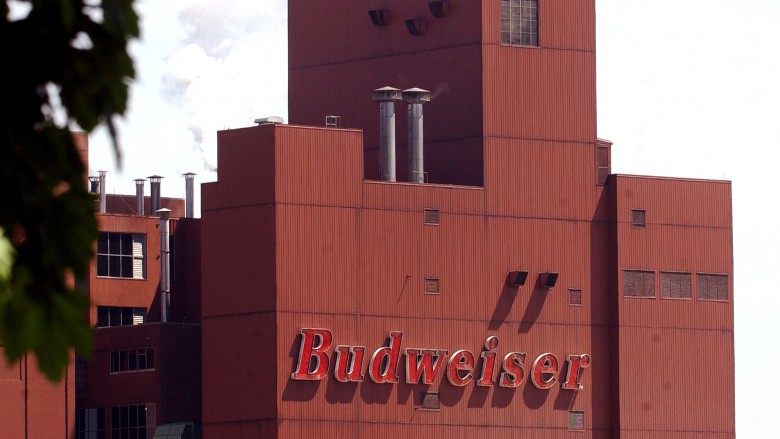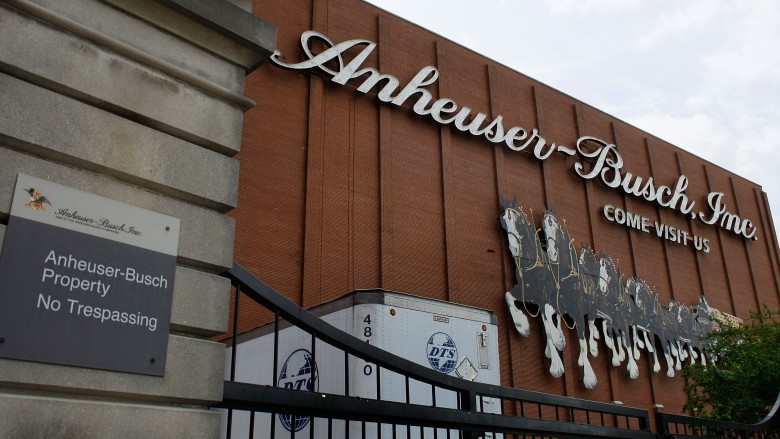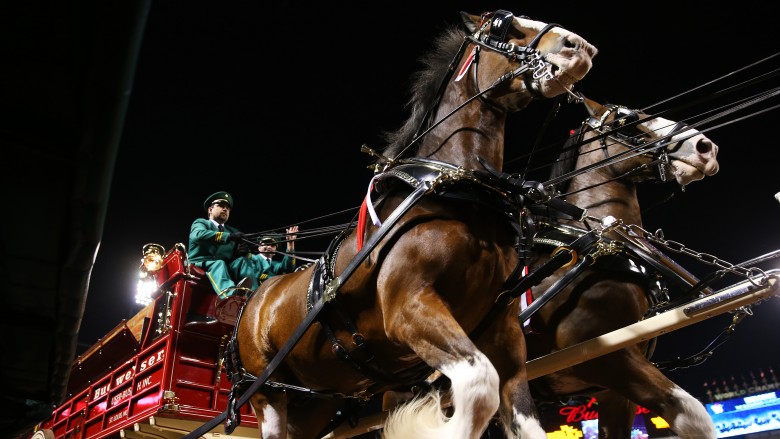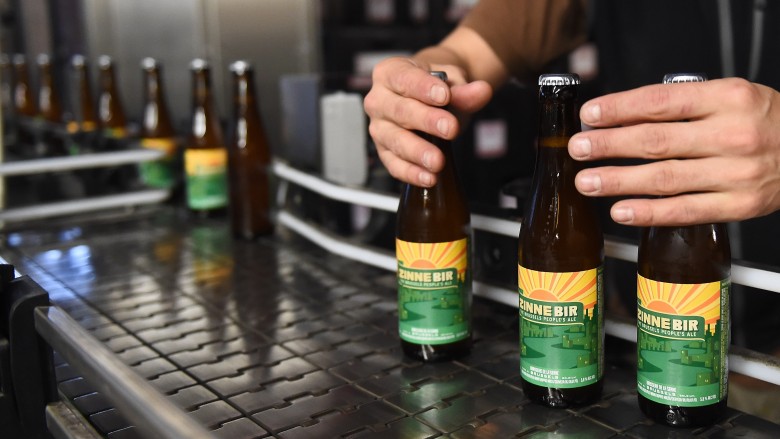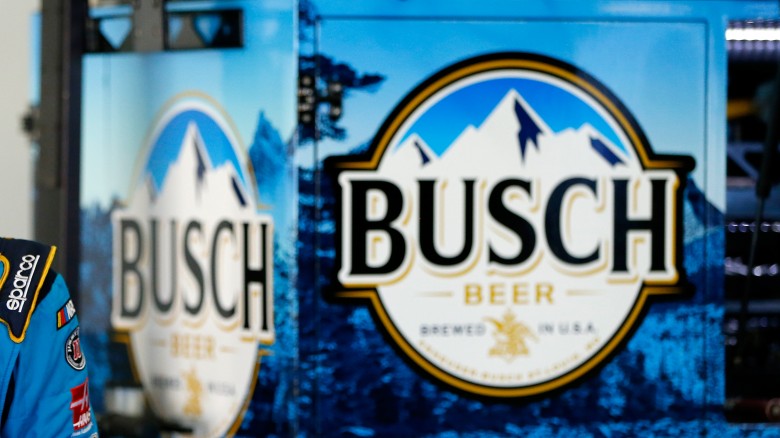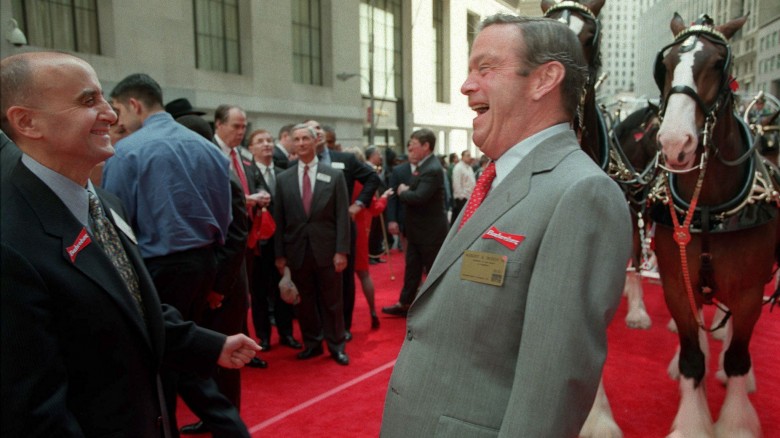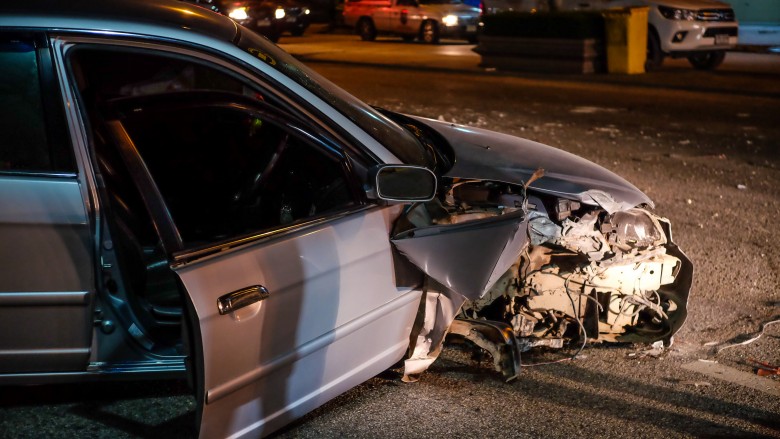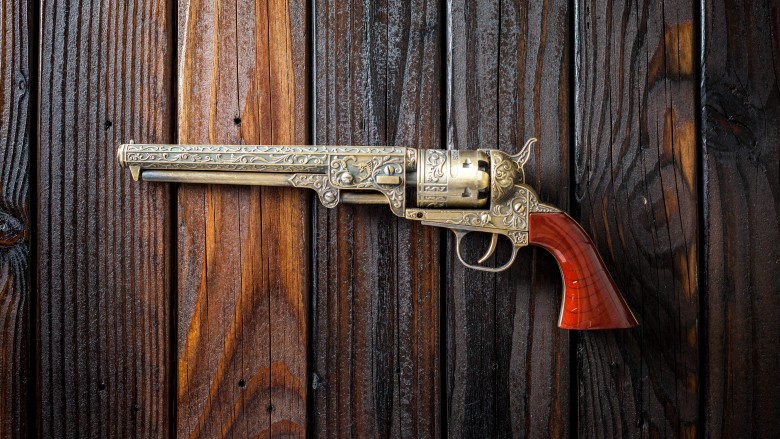Secrets Budweiser Doesn't Want You To Know
Budweiser, America's favorite mediocre beer, has been around for more than 150 years, and in that time, they've racked up some dirty stuff. From family business infighting to suicide, here's some of the darkest business behind the lightest beer.
The first beer was terrible
The Budweiser of today isn't popular because of its fine flavor, but it used to be much worse. Eberhard Anheuser thought he could take his expertise as a soap maker and translate it into the beer business. He bought the failing Bavarian Brewery in St. Louis in 1859 and turned it into the E. Anheuser & Co. Brewery. Unfortunately, it went on failing.
In the book Bitter Brew, the author states that Anheuser beer was incredibly unpopular. Tavern owners said that people would spit the beer across the bar because the taste was so horrible. Ouch. Even the biggest craft beer snob of today wouldn't spit out their beer in public—they would gently remove the foul Budweiser from their mouths and write a detailed Medium piece about it.
After Busch married into the Anheuser family, he joined the business and made the beer into the very average-tasting favorite it is today.
Budweiser dominated the South because of the temperance movement
If you love beer, go ahead and thank the nearest German person. They may not have anything to do with modern drinking, but German immigration was the biggest cause for the rise of breweries in the US. Neighborhoods of German immigrants would be bound together by their local brewery, and Aldophus Busch, the man who made Budweiser taste good, was a German immigrant himself. The reason we're going into this whole German sidebar is it had a lot to do with how Budweiser attained national prominence.
As German immigration and local breweries were booming, the temperance movement was gaining steam in the South. German immigrants weren't really interested in hanging out with a bunch of non-drinking Bible-thumpers, so they avoided the South entirely, and Dixieland was short on breweries. Plus, those hot, sticky summers were horrible conditions for brewing, so by the time the temperance movement died down, the South was short on beer. That's where Budweiser swooped in. Their headquarters in St. Louis made Southern delivery very easy, and since there weren't any local brews to stay loyal to, the South took to Budweiser right away. Even now, the South is all about America's beer.
Their ads may increase underage drinking
Remember the Budweiser Clydesdales? Or guys screaming "Wazzup?" Or those "when you look at them now they're so creepy" Budweiser frogs? Of course you do. Budweiser has mastered the art of catchy-almost to-the-point-of-annoying but memorable commercials. But some claim that these fun little ads are increasing underage drinking.
A study from the Journal of Health Communication in 2005 found that kids enjoyed Budweiser commercials more than any other alcohol brand, mostly because of their use of animals. Industry watchdog Amon Rappaport said to the New York Times, "Using a baby Clydesdale to sell beer to kids is just like using Joe Camel to sell cigarettes." Leaders of the beer world deny that they're targeting teens in any way. It's true that the alcohol industry used to ban its advertising in any media that had an under-21 audience of 50 percent or more. But according to a report by the FTC, that threshold has been lowered to 30 percent, so more kids are memorizing funny beer commercials.
So what if kids see beer ads? Children and teens certainly know that beer exists, and if they end up saying "Wazzup!" to their friends what does it matter? Well, one, it will make them incredibly lame if they do that today. Two, consider a study from the Children's Hospital at Dartmouth-Hitchcock that found underage teens who saw, liked, and remembered beer ads were more likely to binge drink or drink to "hazardous" levels. The Distilled Spirits Council (that would make a good emo band name, by the way) said the study was flawed and inaccurate. Whether kids decide to pick up a Bud based on the cute Clydesdales is unclear, but there's no denying kids are at least exposed to all these animals all right.
A Budweiser video game ended up in family arcades
As arcade games grew popular, Budweiser joined in the fun. In 1983, they created Tapper, an upright cabinet-style arcade game that was decorated to look like a bar. In Tapper, you got to experience the thrills of being a bartender. You got to fill drinks, move drinks, and then fill more drinks!
And it was all Budweiser. The logo was prominently displayed, and it was a clear product of Bud branding. The game was supposed to be just for bars, but it wound up in some family arcades.
After getting complaints that children were playing a game that taught them the best way to serve up an ice cold Budweiser, the game was changed to Root Beer Tapper. You know, because people often serve root beer on tap in places that look suspiciously like bars. Though the game isn't around anymore, it doesn't help Budweiser's case about targeting their beer to kids.
A boycott over a Super Bowl ad
The Budweiser Super Bowl 2017 ad made a lot of people unhappy with the brewing company—not for appealing to teens, but for showing sympathy for immigrants.
The ad shows Adolphus Busch as the mistreated German immigrant who overcame prejudice to give America the gift of watery lager. People, especially very conservative people, were outraged. Not because the beer ad featured zero boobs or funny animals, practically a crime for an alcohol-based Super Bowl ad, but because it was "unAmerican." So, they called for a boycott.
On Budweiser's Facebook page someone commented "I drank your product for 30 years and I will no longer drink it you liberal s*** heads." On Twitter, people said things like "This Bud's no longer for me, it is activist juice" and "Never drinking @Budweiser you should respect the AMERICAN president instead you mock with liberal propaganda #boycottbudweiser." All this hate was targeted toward a beer that just changed its name back from "America."
The boycott didn't last long, but Budweiser found a way to put a bad taste in customer's mouths without them ever drinking their beer.
Craft beer sales are climbing while Budweiser's fall
Back in the '90s, Bud might not have cared that a few drinkers were switching to Miller Light. But now, they need to hang on to whatever's left of their customer base.
Budweiser is now the third-most-popular beer in the nation, which isn't terrible but is far from their previous domination. All the while, craft beer sales continued to climb as Budweiser fell behind. In 1988, Bud sales took up 25 percent of the beer market, and that number plunged to 7 percent by 2011. In 2013, craft beers outsold Bud for the very first time.
Though Anheuser-Bush InBev owns a wide range of craft beers, their classic lager lags behind.
A guy shot another guy because of his love of Budweiser
Sales may be slipping, but some people still love Budweiser. They're almost willing to kill over it.
Clarence Sturdivant, 64, asked his longtime friend Walter Merrick, 66, to hand him a beer. Merrick passed Sturdivant a Busch. Sturdivant didn't want that Busch garbage, he only wanted a Bud. The friends argued over which beer was better until Merrick pulled a gun on the Bud lover, so the Budweiser man shot his friend, reportedly in self-defense.
Luckily, Merrick only sustained a wound to the elbow and lived to tell the tale and drink another Busch. Though it's nice to hear that customers are loyal to their favorite brands, Budweiser probably wasn't thrilled to find that their biggest fan shot someone in the name of Bud.
The family-run company wasn't drama-free
Anheuser-Busch was a family-run business for over a hundred years. Adolphus Busch and Eberhard Anheuser created Budweiser in 1876. Busch's son August ran the company during Prohibition and kept the company alive by selling nonalcoholic beverages and yeast. August Busch Jr. took over in 1946 and opened up breweries across the country. But though the Anheuser-Busch business seems to be a happy family affair, it wasn't.
August III assumed he would take over the company and even asked his father August Jr. to step down in the '70s. Instead of retiring and basking in the glory of his son's future success, Jr. tried to sell the company to RJ Reynolds. August III wasn't having it and staged a company coup in 1975 to oust his father from the executive position. August III won his Game of Thrones–style takeover and ran Anheuser-Busch till 2002.
The family grew bitter after the coup. The father and son did reconcile before August Jr.'s death, but August III still got a lot of side eye at family reunions.
The last Busch in charge was involved in two mysterious deaths
When it was time for August III to step aside, he happily gave the company to his son, August IV. The third didn't disappear completely since he stayed on the board, but August IV was now in control. Unfortunately, he didn't possess the skills of his father. The company went through difficult times and got bought out by InBev. August IV had lost the company that had been in the family for nearly 130 years.
Things got worse, when after a long night of drinking, his girlfriend Adrienne Martin didn't wake up in the morning. The police found her lying on his bed with empty prescription bottles strewn around a straw rimmed with cocaine. Busch gave three variations of his story to police but claimed innocence in them all. The police ruled the death an accidental overdose, though Martin's ex-husband sued Busch for wrongful death. Busch IV settled and paid Martin's family $1.75 million.
This seems fairly tragic until you learn that this isn't the first girlfriend who died in August IV's company. In 1983, he got into a car crash and killed his passenger, 22-year-old Michele Frederick. Initially, Busch IV told the police that he'd been at a bar drinking that night, but he got a sudden case of amnesia and wouldn't answer further questions. August III hired the best lawyers and private investigators to clear his son's name, and after an eight-month investigation, the police declined to press charges.
August Busch IV is still having problems. In January 2017, he was questioned by police when he pulled a gun on a guy in front of a bank in Key West. Busch IV and a man got into an argument over Busch's parking choice, so Busch pulled out his gun. Nobody was hurt or arrested, but it's troubling to see his continued erratic behavior.
The Busch family had more weird deaths in their history
The history of violent deaths goes way back in the Busch family. August Sr., son of the creator of Budweiser, grew ill in 1934. On February 13, he asked his chauffeur to "get some music." After the chauffeur left the room, August picked up his gun and shot himself in the abdomen. Thousands mourned the death of the beer baron.
In 1976, August Jr.'s son, Peter, was hanging out with his friend David Leek. They were doing what all millionaires probably do, hang around in their bedrooms and play around with guns. Peter claimed that he was cleaning the gun and that it went off by accident when he threw it on the bed. But the accidental shot hit Leek and killed him instantly. A spokesperson for the family said that Busch was getting ready for bed and getting a pillow for Leek. When he returned to the bedroom, he brought a pillow and his gun. As he tossed the pillow on the bed, the gun fired on its own. Why he needed a gun to put his friend to bed is unknown. Busch pleaded guilty to manslaughter and got five years' probation, though he never spent a day in jail. So, the Budweiser legacy was built on hops and blood.

